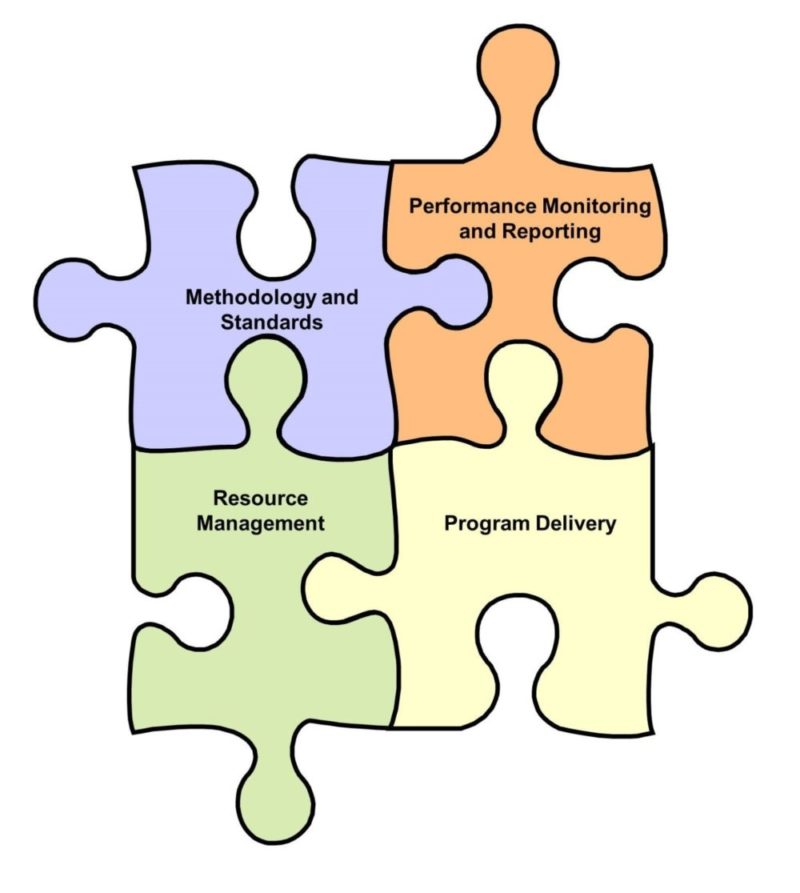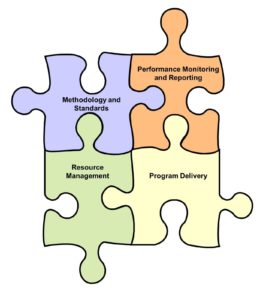
In 2004, as a graduate-level intern pursuing a master’s degree in organization development, I had the opportunity to work in the Change Management Office of Sky Financial Group, the parent company of Sky Bank. 16 years ago, change management was not a well-known term and certainly Change Management Offices were not common organizational capabilities. This office, however, was unique. Led by a SVP with a master’s degree in organization development, it reported in directly to the C-Suite of this midwestern bank. It was responsible for facilitating the strategic planning process for the bank, and then overseeing the program, project and change management associated with the top initiatives tied to the strategic plan. Needless to say, I got a front row seat, and sometimes even took the wheel, as we stood up what was a novel capability then that is now a mainstay for many organizations.
Since 2004, I have gone on to build organization development functions inside manufacturing, as well as program, project and change offices in insurance and health care organizations. I have learned a thing or two along the way of how to set up these capabilities. In this blog post, I am sharing my mental model of the four elements one needs to build in establishing a new Change Management Office (CMO). In truth, however, these lessons can be applied to building any new internal function, center of excellence, office or team.
The Four Components of a CMO
First, every CMO will need to be built to include the following four elements:
 As you stand up your CMO, you can literally start anywhere in this model. However, very quickly one puzzle piece leads to the next, and you will find that you need to build something in each of the quadrants fairly quickly, even if each element is an elementary or first draft offering to get started.
As you stand up your CMO, you can literally start anywhere in this model. However, very quickly one puzzle piece leads to the next, and you will find that you need to build something in each of the quadrants fairly quickly, even if each element is an elementary or first draft offering to get started.
1. Program Delivery
Many organizations start with just a couple of hires, maybe even one, to see just what this “change stuff” is anyway. That first hire, sometimes a Manager or Director, feels an immediate pressure to start adding value right away by completing demonstration projects or helping struggling projects or programs that are in the most dire straights. He or she knows that future headcount allocation is dependent on delivering the goods and proving value. So, instead of building a capability, he or she is swept right away into supporting large change efforts. At the same time, he or she will need to teach and educate the organization on what it is that a change management professional, and eventual team, does and provides. That leads us to the next piece of the puzzle…
2. Methodology and Standards
Change Management professionals love to talk about methodology and standards. Do you have X, Y or Z certification? Do you subscribe to the thinking of Thought Leader A or B? It is what gives people street cred and opens the door, but it does not guarantee quality consulting or quality of work. At some point, your organization will look to the CMO to understand this “change stuff” and your team better have a point of view on what it means to support and enable successful change. That point of view also needs to be easily translated and explained to others, without jargon, or an abundance of spreadsheets or mundane templates.
However, it is not sufficient, in my experience, to try and build a methodological point of view based solely on a professional association’s change management competency model or a for-profit group’s change certification course. Your change team should be experienced, well rounded consultants fluent in modern management theory, organizational behavior and development, organization design, communications, and learning. They should also have exposure to, experience with and competence in consulting skills, something akin to Peter Block’s Flawless Consulting book and workshops or Ed Schein’s process consulting model. They should understand intake and diagnosis, feedback, intervention design, development and deployment. In other words, they need to understand that while “change management” as a term is less than 20 years old, it is built on the foundation of modern management thinking and organizational behavior. That background will help them translate what is provided in a change management certification course and make it understandable, applicable, and palatable to your organization.
3. Resource Management
Very quickly, if not from the moment of the first hire, the organization will have more needs than your small, developing team can support. The question is, who gets access to your precious resources? How do you serve others who still need help but for whom you don’t have the time to engage on a deep or prolonged level?
In every instance in my career in building CMOs, PMOs and OD departments, we created three capabilities to support resource management:
- Project intake and assessment processes to take requests for support, vet them, and determine priority and importance
- Brokering model to identify competent and capable partners that can augment the team when the team is at capacity
- Coaching and self-service options for internal customers whose projects don’t rise to the top of the list for your team to support directly, but for whom you can provide some guidance and light consulting as they do their work
Each of these resource management capabilities deserves its own blog post, so I will explain more in future writings.
4. Performance Monitoring and Reporting
Last but not least, your new change management function should be prepared to provide some quality assurance and quality control for the organization. Not only do you need to be able to report on your team’s successes and outcomes, you also need to be able to quickly help internal customers who are using your tools, points of view, coaching and augmented resources feel confident that they are on the right track.
Sometimes people think this part of the CMO is about oversight and micromanagement. It does not have to be. Performance monitoring and reporting is simply a way to check in on how things are going, and help your team and your internal clients make adjustments to be successful.
Expanding the CMO
Chances are, if you have made great strides in building, testing, and experimenting in each of the four areas listed above, you are well on your way to building a strong team. You are also likely garnering the support and attention of your organization, which means additional headcount and budget often follow.
Feel free to leave your thoughts below on what your experience has been in standing up new change, program, project or OD offices.

Great article, Deb!